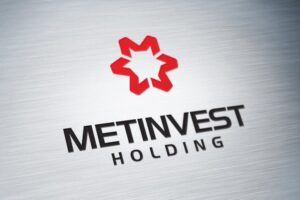
Cherkasy Bus JSC may supply the National Police of Ukraine with 15 specialized Ataman D09216 buses for a total of ₴67.95 million, or ₴4.53 million per bus.
According to information in the Prozorro electronic public procurement system, the company was the only participant in the tender, offering buses at the expected purchase price.
The delivery date is December 15 of this year. Full payment is due within 90 banking days. The buses will be manufactured in 2025.
The contract is currently awaiting signature.
Cherkasy Bus is a regular supplier of such special buses to the National Police. In particular, in July last year, a contract was signed for the supply of 30 buses for UAH 124.07 million (or UAH 4.24 million per bus).
The Ataman D09216 special-purpose bus, built on Japanese Isuzu chassis, is 8.2 m long, equipped with a Euro 5 diesel engine, has 30 seats (plus the driver’s seat), and air conditioning in the driver’s and passenger compartments.
The bus is designed to transport National Police personnel without combat equipment (weapons, body armor, etc.).
Cherkasy Bus guarantees the readiness and availability of bus maintenance and repair services and has 35 service centers throughout Ukraine.
Founded in 1994, the Cherkasy Bus factory manufactures small and medium-sized Ataman buses, as well as other wheeled vehicles based on Japanese Isuzu components.
According to the company’s financial report on its website, in 2024, it reduced its net profit by a third to UAH 122.1 million, while its net income increased by 2.6% to UAH 1 billion 771 million.

As part of Rinat Akhmetov’s Steel Front military initiative, mining and metallurgical group Metinvest has handed over 33 vehicles – pickups and off-road vehicles – worth a total of UAH 25 million to a brigade of the Ukrainian National Guard.
According to a press release, the group continues to enhance the mobility of Ukrainian units on the front lines.
It is specified that the vehicles were purchased across Europe and are mainly high-clearance vehicles that have already proven themselves in combat conditions. Among those handed over are Mitsubishi L200, Volkswagen Amarok, VW Transporter, and other models. Some of the vehicles are equipped with additional protection and reinforced running gear.
The transfer of equipment took place taking into account the needs of the brigade: some of the vehicles are already on combat missions, while the rest are being retrofitted.
“For Metinvest and Steel Front, this is systematic work – we regularly provide the military with transport, electronic warfare equipment, shelters, drones, and other equipment. This batch of vehicles is another step in this support strategy,” commented Alexander Vodoviz, Head of the CEO’s Office at Metinvest.

In 2025, Ukrainian farmers will set a record in the history of independent Ukraine for imports of agricultural equipment, which will reach $1.5 billion, according to Mark Valery Barlet, director of the Marketing Communications agency.
“I think there will be a record in the history of independent Ukraine for imports of agricultural equipment. The effect of pent-up demand, which has lasted for the last five years, including 3.5 years of war in Ukraine, will kick in, and during the COVID-19 pandemic, manufacturers did not risk importing combine harvesters. This year, purchases of agricultural machinery will break all records,“ he said during the ”Hlib.ua” conference in Kyiv on Thursday.
According to him, agricultural producers were able to make such a breakthrough in purchases thanks to the long-term development strategy of their enterprises.
“Regardless of the bad weather we had – drought in some places, flooding in others – large companies operate in different regions, develop long-term strategies, and diversify their risks by developing different business areas,” said the marketing agency director.
According to the expert, Ukrainian farmers’ investments in agricultural machinery will reach $1.5 billion in 2025. Barlet estimates that such investments will pay off in at least 10 years.

On August 23–24, the new 3.5-hectare city park on the Dnipro embankment, next to the River Mall shopping center, will host the autumn cycle of Ethnofest “Harvest.” The program includes performances by the Hryhoriy Veryovka National Academic Choir and the ShchukaRiba band, lectures, and children’s areas.
The park is located in the Darnytskyi district of Kyiv and is designed as a venue for leisure and cultural events. The first festival at the new location, Ethnofest “Vytoky,” has already taken place after the opening and attracted thousands of guests, according to the organizers.
The River Mall shopping and entertainment center opened in Kyiv in 2019, with a total area of about 140,000 square meters; the new park near the embankment was built with funding from the River Mall shopping and entertainment center.

Financial Company (FC) Express Invest LLC (Boryspil, Kyiv region) has acquired 100% of the shares of PJSC Production Association Stalkanat-Silur (Odessa).
According to a statement by Stalkanat-Silur in the National Securities and Stock Market Commission system, the information about the change of shareholders is dated August 15 of this year.
At the same time, the powers of all members of the supervisory board (SB) of PrJSC “Production Association ”Stalkanat-Silur” were terminated as of August 18, 2025. In particular, the powers of the chairman of the SB, David Nemirovsky, and members of the SB, Anton Mikhalenko, Dina Nemirovskaya, and Vitaly Dubovich, were terminated.
Another announcement dated August 18 specifies that due to direct alienation, David Nemirovsky’s stake in the private joint-stock company has decreased from 50% to zero, Anton Mikhalenko’s stake has decreased from 23.7% to 0, Maria Kondratyuk’s stake has decreased from 23.1% to 0, and Vitaly Dubovich’s stake has decreased from 3.2% to 0. The date on which the threshold values were reached or crossed is August 14, 2025.
At the same time, the share of LLC “FC ”Express Invest“ in PJSC ”VO “Stalkanat-Silur” increased from 0 to 100%.
As reported, the shareholders of PrJSC “VO ”Stalkanat-Silur” proposed to liquidate the Khartsyzsk branch of the company – the Silur plant, located in the temporarily occupied territory of Donetsk region – this issue was included in the agenda of the general meeting of shareholders scheduled for August 11 of this year. The minutes of this meeting have not yet been made public.
VO Stalkanat-Silur ended 2023 with a net loss of UAH 720,000, compared to UAH 9.494 million in 2022. The company’s undistributed profit at the end of 2023 amounted to UAH 102.193 million.
The general meeting of shareholders held on September 3, 2021, decided to split off PJSC Stalkanat-Silur and create a new company, PJSC Stalkanat, transferring to it, in accordance with the approved distribution balance sheet, part of the property, rights, and obligations. At the same time, all shares of the newly created PJSC Stalkanat were distributed among all shareholders of PJSC Stalkanat-Silur. The shareholders then agreed to spin off the company Stalkanat, to which the Odessa industrial site was transferred. In turn, PJSC Stalkanat-Silur, which owns the Silur plant located in the temporarily uncontrolled territory (Khartsyzsk, Donetsk region), also remained.
PrJSC “VO ”Stalkanat-Silur” (Odessa) previously had two branches – in Odessa and in Khartsyzsk, Donetsk region, on the NKT. On December 1, 2016, the company’s management officially announced the closure of its branch in Khartsyzsk; the corresponding announcement was published in the newspaper Uriadovy Courier. Later, the management of PJSC “VO ”Stalkanat-Silur” announced the seizure of the company’s branch in Khartsyzsk on the NKT and sent a corresponding statement to the National Police.
According to the NDU for the first quarter of 2025, Davyd Nemirovsky (Ukraine) held 50.0001% of the shares of PJSC “VO ”Stalkanat-Silur,” Anton Mikhalenko (Israel) held 23.7%, and Maria Kondratyuk (Ukraine) held 23.1%.
The authorized capital of PrJSC Stalkanat-Silur is UAH 8.346 million.
Financial Company (FC) Express Invest LLC (Boryspil, Kyiv region) was registered on November 27, 2000. Its main activity is the provision of other financial services (except insurance and pension services).
The authorized person is Alexander Zinoviev.
Vitaliy Kopan, Yevgeny Dzyubenko, Tatyana Sonceva, Sergey Poshtar, Yevgeny Simatov, Anatoly Dyachenko, Valery Nedashkovsky, Artur Shadur, and Vitaliy Bondar each own 9% of the LLC, while Alexander Stambovsky (all in Kyiv) and Express Invest Ltd. hold 9.5% each.
The authorized capital is UAH 1.2 million.